Eyelid ptosis or drooping of the upper eyelid is most commonly caused by stretched, detached, or a dystrophy of a muscle that lifts the eyelid called the levator muscle. Aside from these common causes of ptosis, which are generally limited to the levator muscle, there is another category known as neurogenic ptosis.
What Causes Neurogenic Ptosis?
Neurogenic ptosis is a condition in which the cause of eyelid droop is related to the nerves that send signals to the muscles that determine the position of your eyelids. An accurate diagnosis, as in all areas of medicine, is critical to a successful treatment strategy. I’ll go over the various neurogenic eyelid ptosis causes, and how these conditions can be treated.
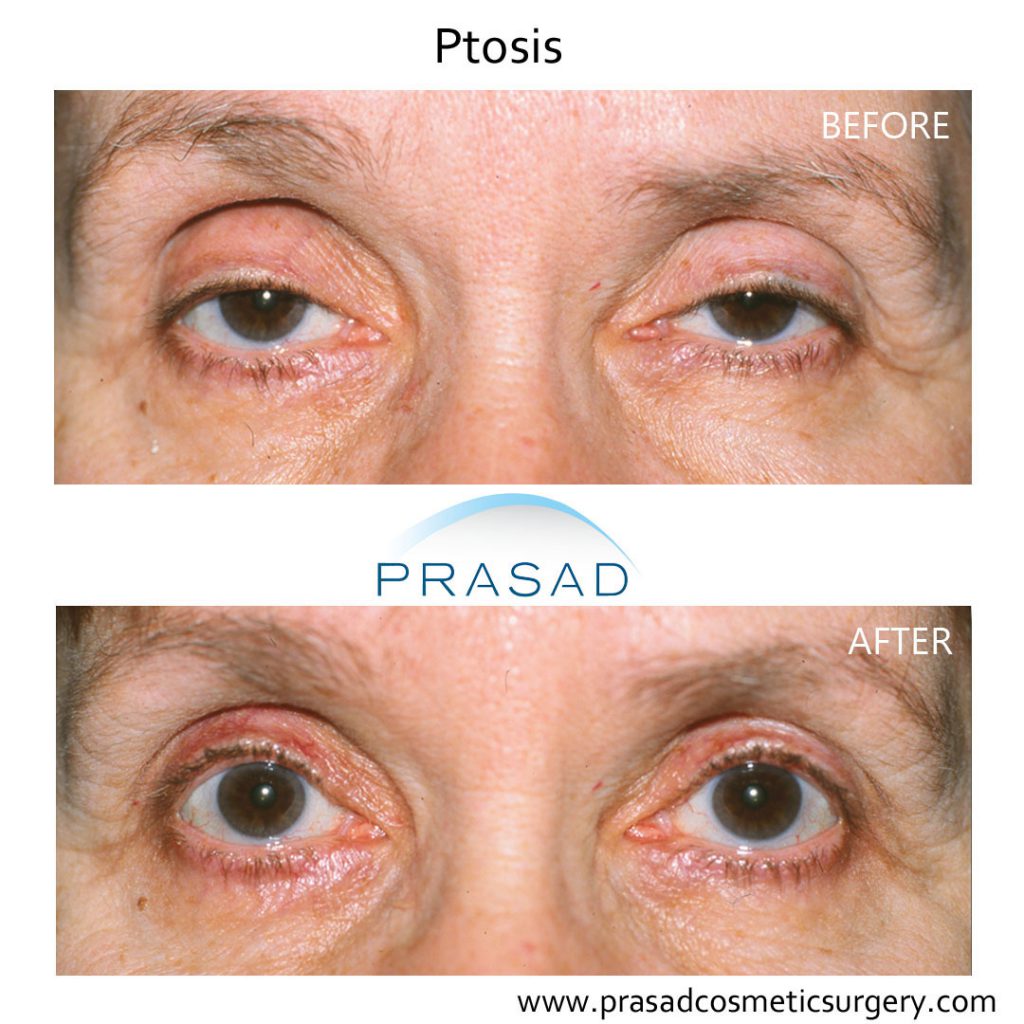
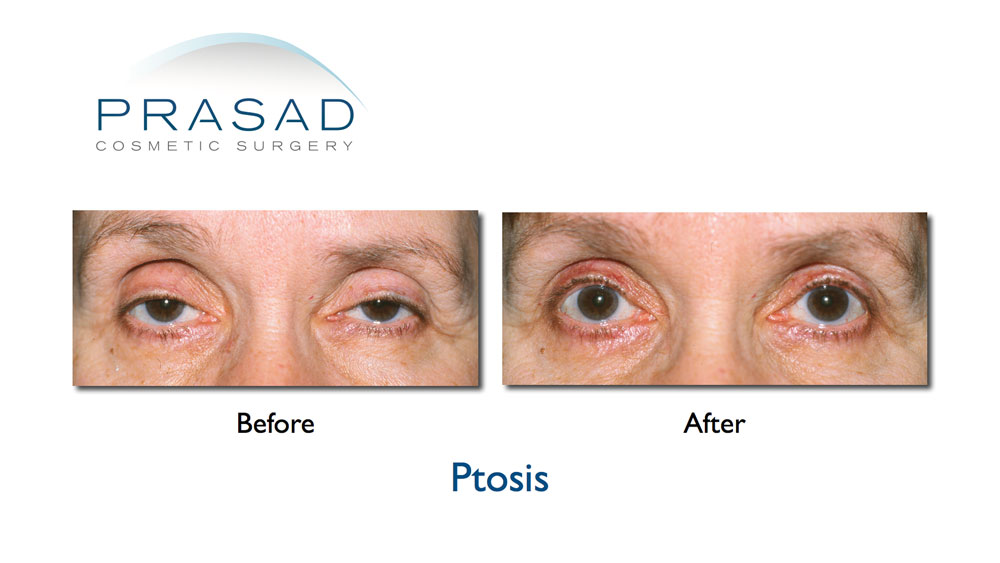
I am a specialist in eyelid ptosis surgery, including levator muscle advancement for age-related ptosis; and levator muscle resection, and frontalis sling for congenital ptosis. I also specialize in ptosis surgery performed from behind the eyelid, such as Mueller’s muscle resection. Since no external incision is made if there is no excess skin, this method allows for faster healing.
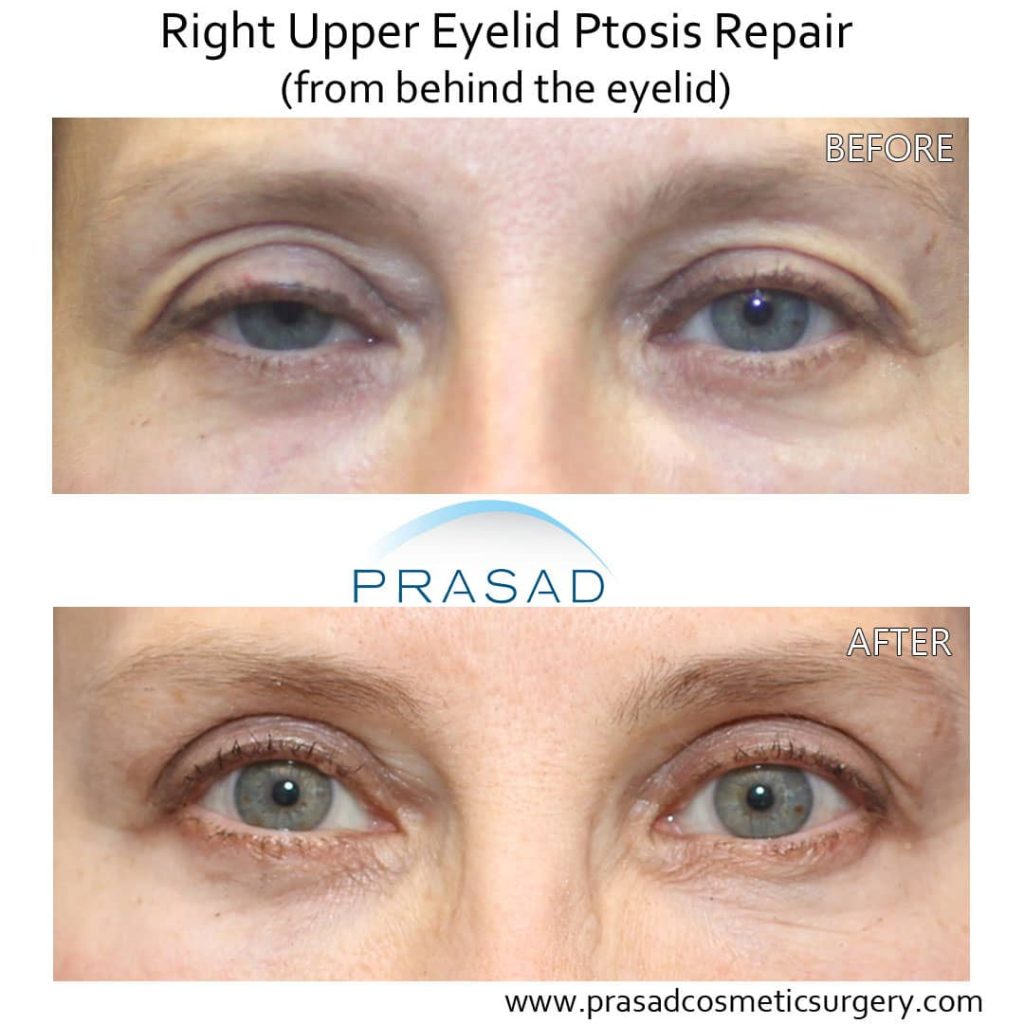
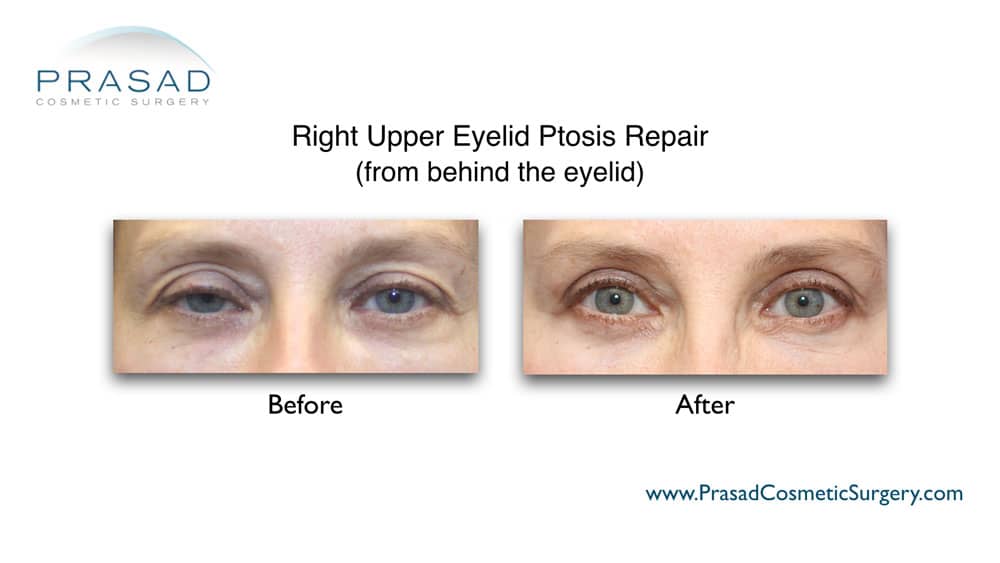
For years, I’ve observed in the cosmetic field that eyelid ptosis is frequently overlooked when cosmetic eyelid surgery is performed. Because of this oversight, the patient may still appear tired despite having upper eyelid blepharoplasty. Ptosis surgery is routinely performed in my practice for patients who come in for cosmetic eyelid surgery to help my patients’ eyes look brighter and less tired.
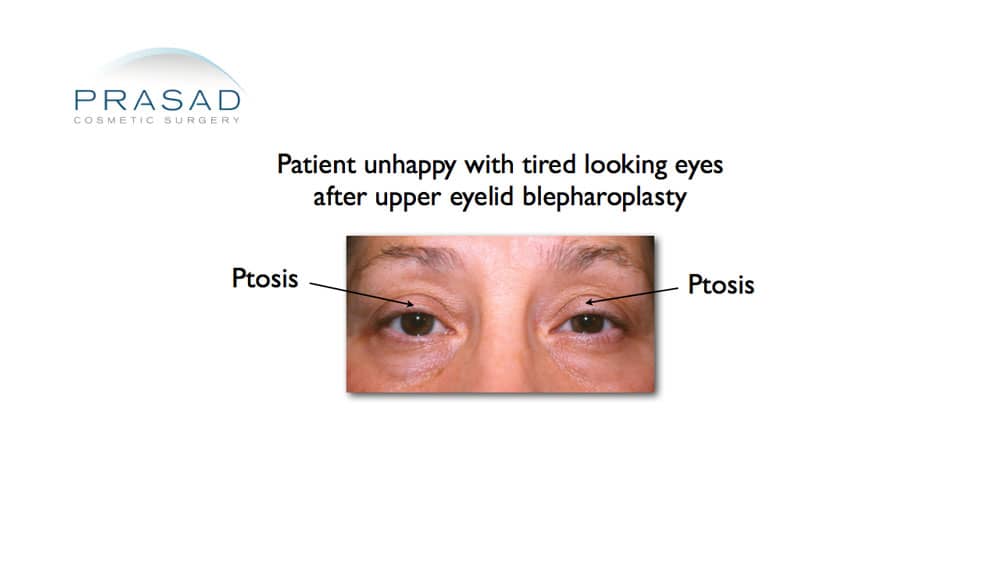
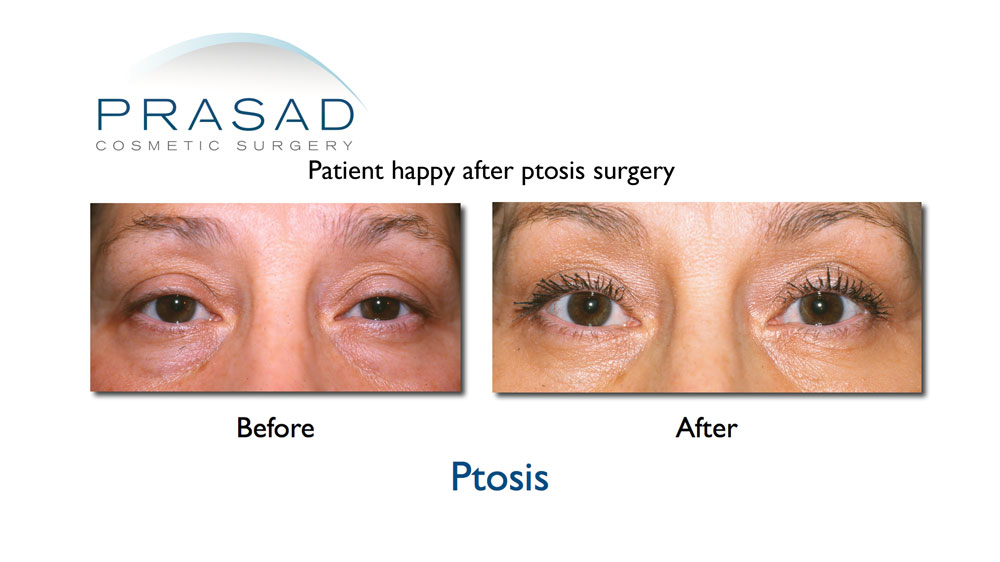

When I see a patient with ptosis in my office and suspect a neurologic cause, I consider three possible ptosis eyelid causes:
- Myasthenia gravis
- Horner’s syndrome and
- Nerve palsy
Myasthenia gravis
Myasthenia gravis is an autoimmune disease characterized by weakening and fatigue of muscles in different areas depending on the type of myasthenia gravis. Myasthenia gravis can also affect the muscles responsible for eye movement. This means that in addition to eyelid ptosis, the patient can also experience double vision.
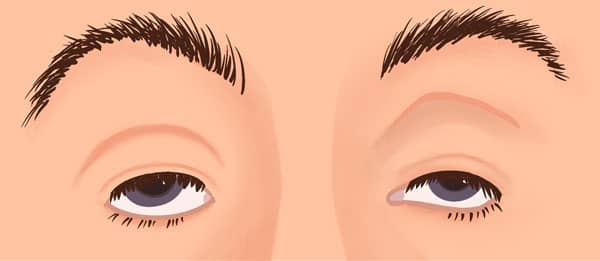
Horner’s syndrome
Horner’s syndrome is the disruption of nerve pathways from the brain to the eye, affecting one side of the body which can result in eyelid ptosis. Horner syndrome is most often associated with conditions such as stroke, spinal cord injury, or the presence of a tumor. In some cases no underlying cause is determined.
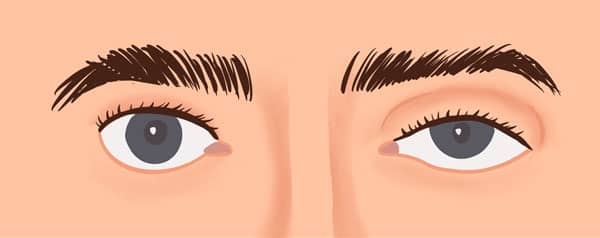
Horner syndrome also affects the eye, where the pupil is small and doesn’t open under low light conditions. In addition, there is an absence of perspiration on one side of the face. The triad we’re taught in medical school is ptosis, miosis, and anhidrosis. Since Horner syndrome is most often caused by another medical condition, treatment is most often focused on the underlying cause.
Nerve palsy
Nerve palsy occurs when the third cranial nerve, also called the oculomotor nerve, has been compressed, or does not get adequate blood flow, affecting movement in the upper eyelid, and the eye muscles. In addition to ptosis, the eye is misaligned, so it appears to be looking down and outward. The sudden onset of this condition can be a medical emergency because of the presence of an aneurysm in the brain.
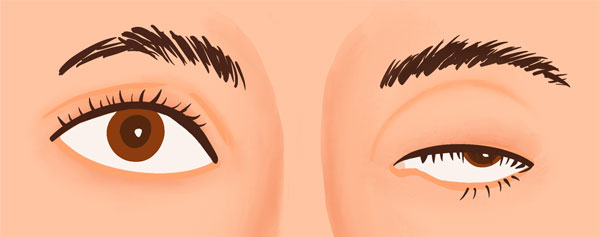
Ptosis Treatment
In my practice, if I suspect a patient has neurogenic ptosis, I collaborate with a neuro ophthalmologist to complete the full diagnostic workup as well as any medical treatment. After that, I’ll perform the necessary eyelid ptosis surgery.
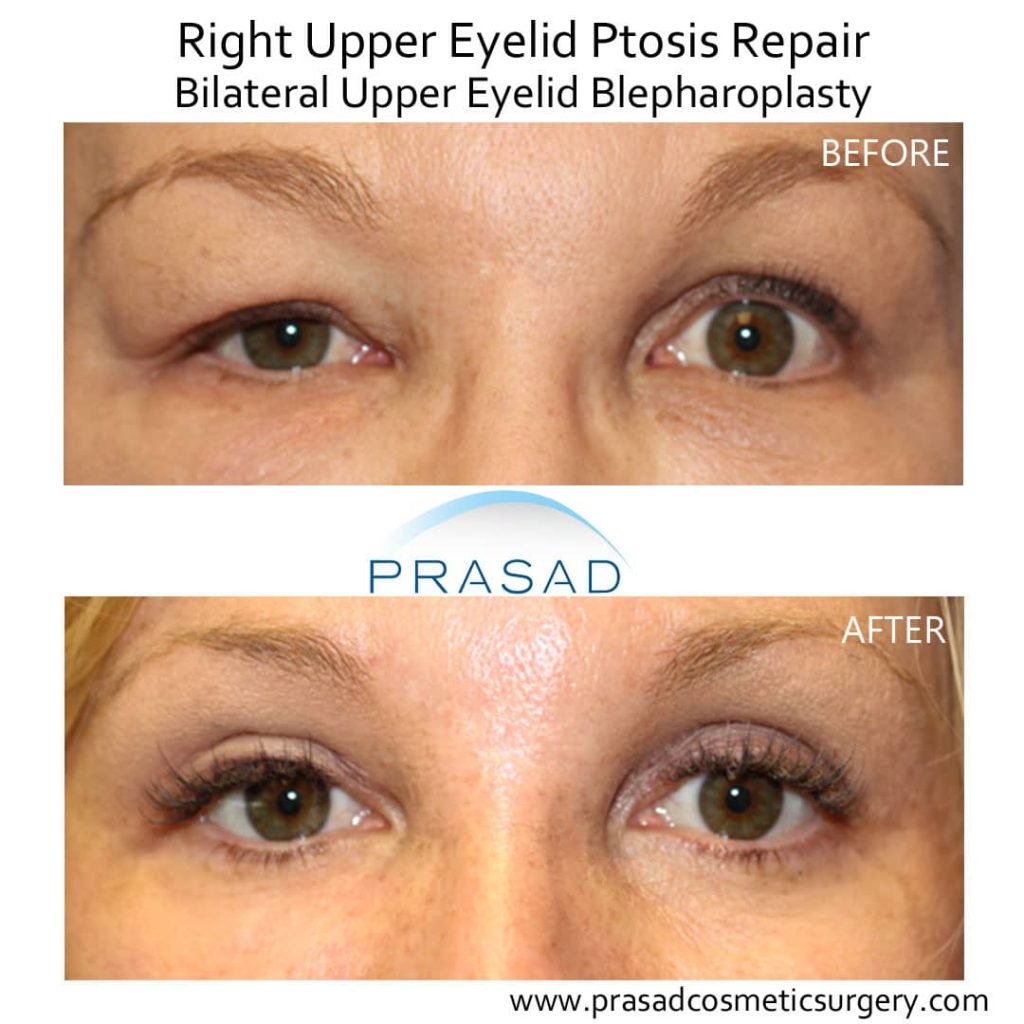
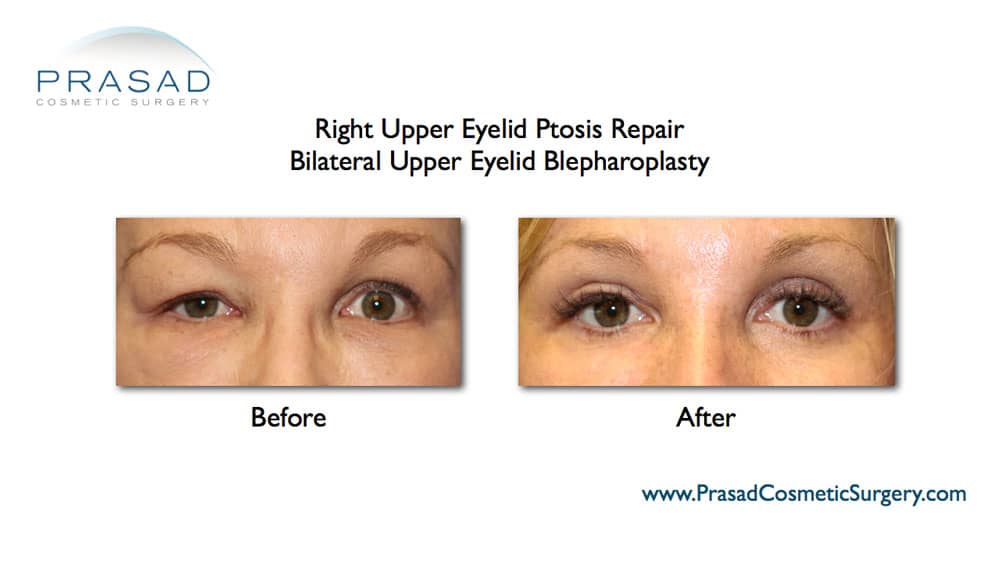
Eyelid ptosis surgery is performed under local anesthesia and LITE IV sedation. In some cases, I will perform surgery and then have my patients sit up to ensure successful elevation.
Patients are discharged from the hospital the same day of surgery and can return to work in one week or less, depending on the type of surgery performed.
In conclusion, it’s important to diagnose and manage neurogenic ptosis appropriately. Once appropriate medical management is completed, ptosis surgery to help people see better and look better can be performed.
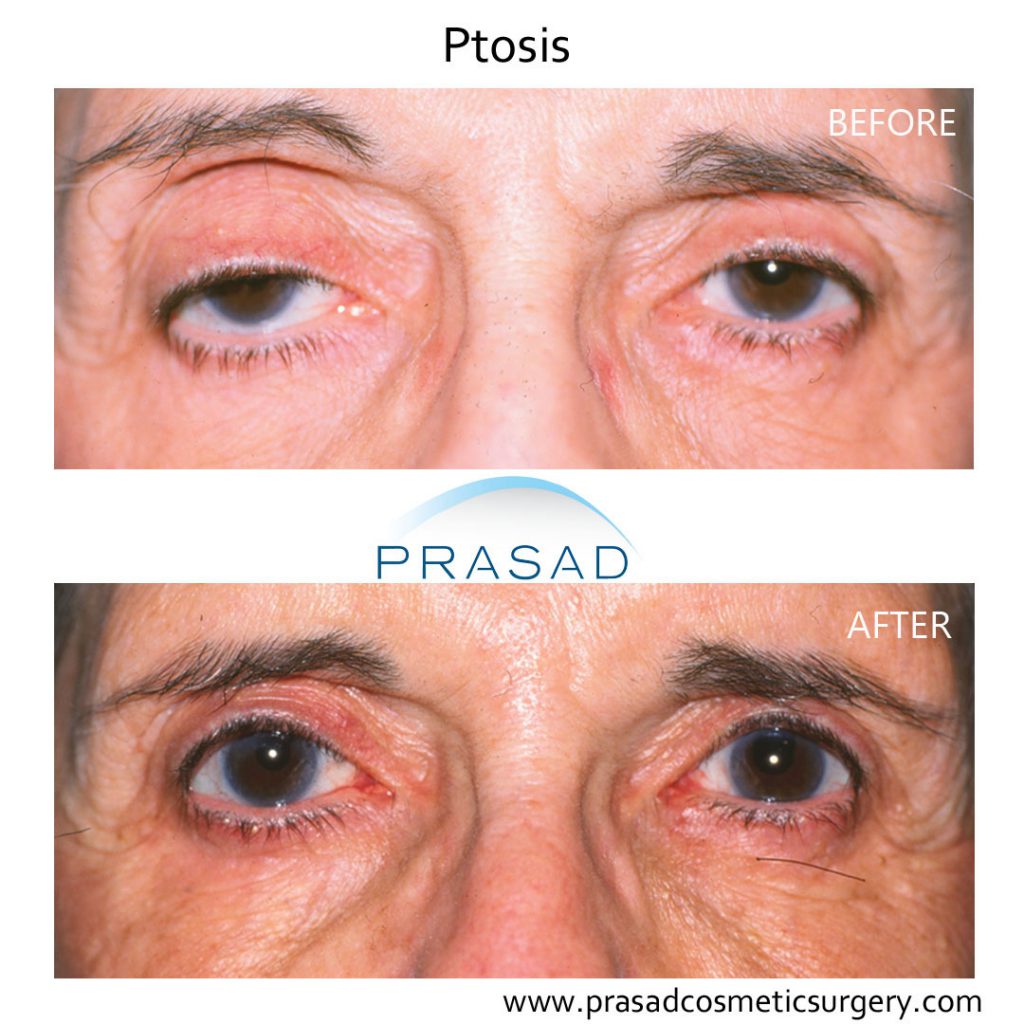
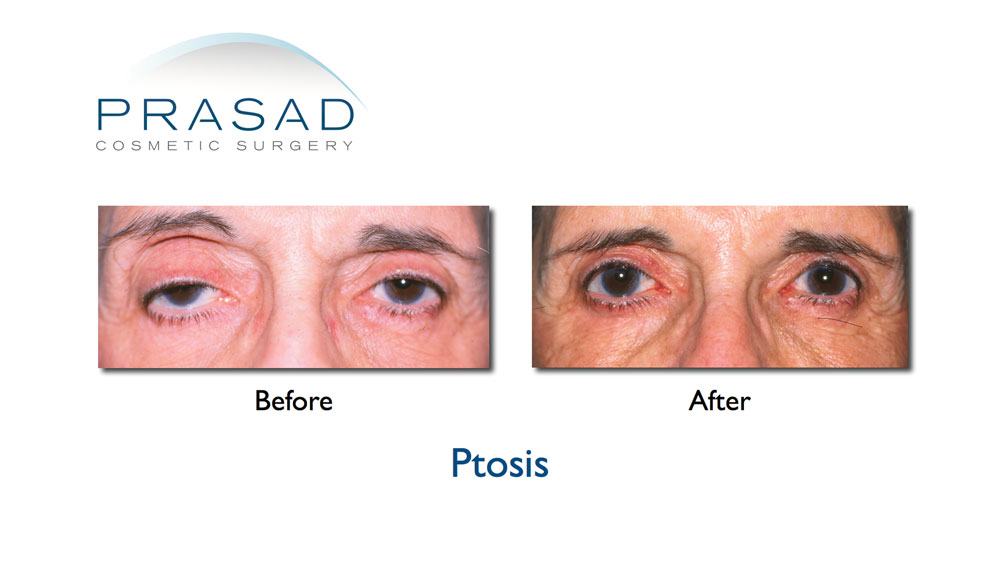
Eyelid Ptosis Surgeon - Manhattan NYC and Garden City, Long Island New York
Dr Amiya Prasad is a Diplomate of the American Board of Cosmetic Surgery, and a Fellowship-trained oculofacial plastic and reconstructive surgeon. He’s been in practice in New York City and Long Island for over 25 years. To make an appointment, please complete the form below, or call our offices at (212) 265-8877 in Manhattan, (516) 742-4636 in Garden City, Long Island, or (703) 356-1336 in Vienna, Virginia.
